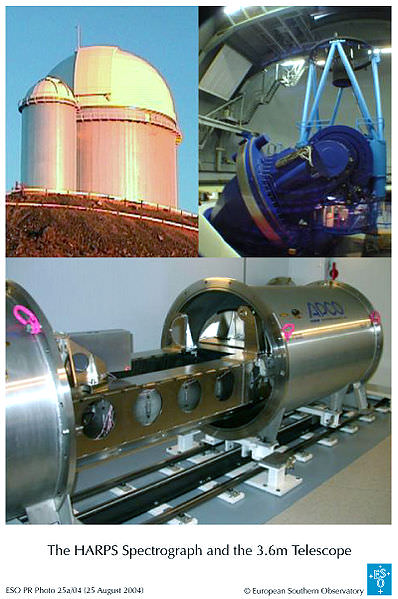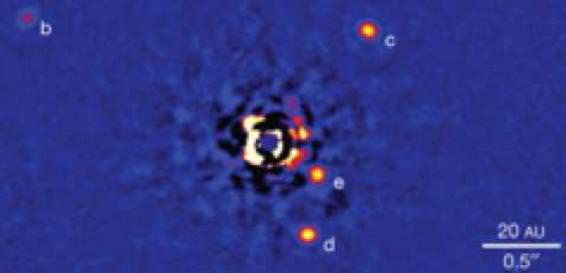[/caption]
Able to achieve an astounding precision of 0.97 m/s (3.5 km/h), with an effective precision of the order of 30 cms-1, the High Accuracy Radial velocity Planet Searcher (HARPS) echelle spectrograph has already discovered 16 planetary objects in the southern hemisphere and has now logged four more. And that’s only the beginning…
“A long-period companion, probably a second planet, is also found orbiting HD7449. Planets around HD137388, HD204941, and HD7199 have rather low eccentricities (less than 0.4) relative to the 0.82 eccentricity of HD7449b. All these planets were discovered even though their hosting stars have clear signs of activity.” says X. Dumusque (et al). “Solar-like magnetic cycles, characterized by long-term activity variations, can be seen for HD137388, HD204941 and HD7199, whereas the measurements of HD7449 reveal a short-term activity variation, most probably induced by magnetic features on the stellar surface.”
Using radial velocity is currently the preferred method for detecting new planets. But, despite the quality of the equipment, low mass planets placed at a great distance from the host star become problematic because of the star’s own “noise”. RV is an indirect method which utilizes the presence of star wobble to spot orbiting bodies. Unfortunately, normal star activity such as magnetic cycles, spots and plagues can produce similar signals, but now long term variables like these are being fine tuned into the equation.
“The planets announced in this paper for the first time have been discovered even though their host stars display clear signs of activity. We have found that HD7449 exhibits signs of short term activity, whereas HD7199, HD137388, and HD204941 have solar-like magnetic cycles.” says Dumusque. “When examining the RVs and the fitted planets for HD7199, HD137388, and HD204941, it is clear that magnetic cycles induce RV variations that could be misinterpreted as long-period planetary signature. Therefore, the long-term variations in the activity index have to be studied properly to distinguish between the real signature of a planet and long-term activity noise.”
The paper then goes on to explain our Sun should show RV variations of 10ms?1 over its cycle and that it is typical behavior for solar-like stars. Perhaps all stars which display magnetic cycles also have long-term RV variations? “The high precision HARPS sample, composed of 451 stars, provides a good set of measurements to search for this activity-RV correlation.” says Lovis (et al). “A more complete study is in progress and will be soon published.”
Factual Information Courtesy of Wikipedia. Further Reading: The HARPS search for southern extra-solar planets. XXX. Planetary systems around stars with solar-like magnetic cycles and short-term activity variation.


